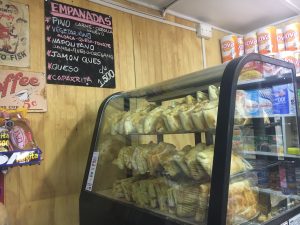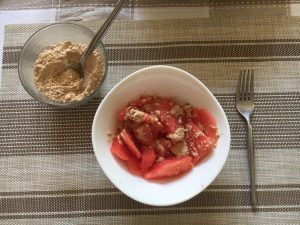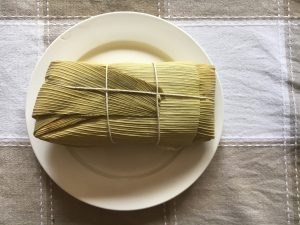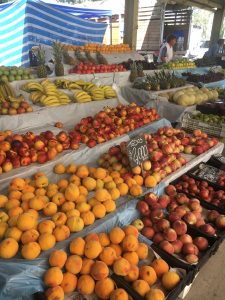[ https://vimeo.com/319071861 — Some of what I’ve eaten in the last six months condensed into one mouth-watering minute ]
Simple, rich and natural are three words I’d use to describe Chilean culture, but even more specifically, the food they eat.
When people ask me about Chilean culture, one of the things I think of first is the cuisine. And it’s because, perhaps unlike the capitalistic and fast-paced mindset that most North Americans are born with, Chileans express their love through food and drink. Some of the most raw and pure things I’ve learned about Chileans and their culture I’ve learned when when I was sitting around a table at an asado (barbecue), eating the famous longaniza sausage from the central valley and sipping smooth Chilean red wine.
Since I started college almost three years ago, my relationship with food has become a little estranged. That, in part, has been the drastic change in diet from the home-cooked meals I grew up on to the mass-manufactured food I’ve had to eat my first two years at school. Putting on weight, becoming self-conscious, then working out regularly and eating flavorless salad for dinner was my cycle for the past two years. Until now.
At first I was shocked by the differences in culinary practices between the United States and Chile: here we eat a modest breakfast of yogurt or cheese and bread before school or work, gather for a grand and home-cooked lunch between one and three in the afternoon, eat a snack or small dish called “once” in the late afternoon, and then eat a combination of leftovers for dinner between seven and even 10 at night.
Eating later was the first thing that took awhile to get used to, and the whole city putting itself on pause for lunch time was another. Parents, kids, grandparents, friends, aunts, uncles– virtually everybody– leave school or work to come home and share a hearty lunch. This was another thing that started out foreign to me, because at school or at home I rarely even eat lunch at all, but here it represents Chileans’ commitment to gather with their loved ones around something homemade almost every day. In the end, it demonstrates their commitment to conserving their culture.
Another thing that caught me off guard at first is that Chilean food, by American standards, would be considered under-seasoned. Think about your favorite dishes in the US. Some of mine include sweet barbeque ribs, pasta carbonara and chicken enchiladas. All of these plates contain thick sauces and a lot of ingredients but in Chile, and although I’ve indulged in some elaborate dishes since being here, some of my favorite foods are made with only a few components.
Choripan: longaniza sausage in a toasted ciabatta bun

Empanadas vegetarianas: cheese, tomato and basil baked in a bread pocket

Tortilla: carrots, green beans or tuna sauteed and then pan seared with eggs to turn it into a frittata

Sandia con harina tostada: Watermelon under a toasted flour sprinkle

Humitas: Fresh corn mixed with onion and basil, wrapped in a corn husk and cooked in boiled water

Chileans eat simply, and they eat well, and part of that is because they buy the majority of their food at traditional open-air markets. When I think of Farmers’ Markets in the U.S., I think of them as a rarity or a mirage that we see once or twice a week before we consume our GMO-laced food from a corporate grocery store. But here, people sell their all-natural home-grown fruits and vegetables on the street, and they are simply delicious. The phenomenon of the South American mercado complex is yet another reflection of Chilean culture in the sense that most don’t worry about trivial formalities like permits to sell products, obsessive sterilization or digital record-keeping. They grow (or butcher) their products and sell them after a few minutes of haggling with customers, and that’s it. There’s only really one step in between the countryside and the consumer, and that is something so unique and unfamiliar from most people’s experiences in North America.
I’m going to miss the food at Chilean asados: the array of fresh and fermented cheese appetizers and the cuts of steak so rich with flavor that they only need a pinch of salt before touching the grill, the fluffy eggs cooked in hollowed out peppers and the sliced tomatoes seasoned only with salt and olive oil. But more than all my favorite Chilean foods, I’m going to miss watching my host parents prepare it mindlessly, my host brothers making fun of the way I cut vegetables, and all the laughs we’ve shared around the table.
Camille


